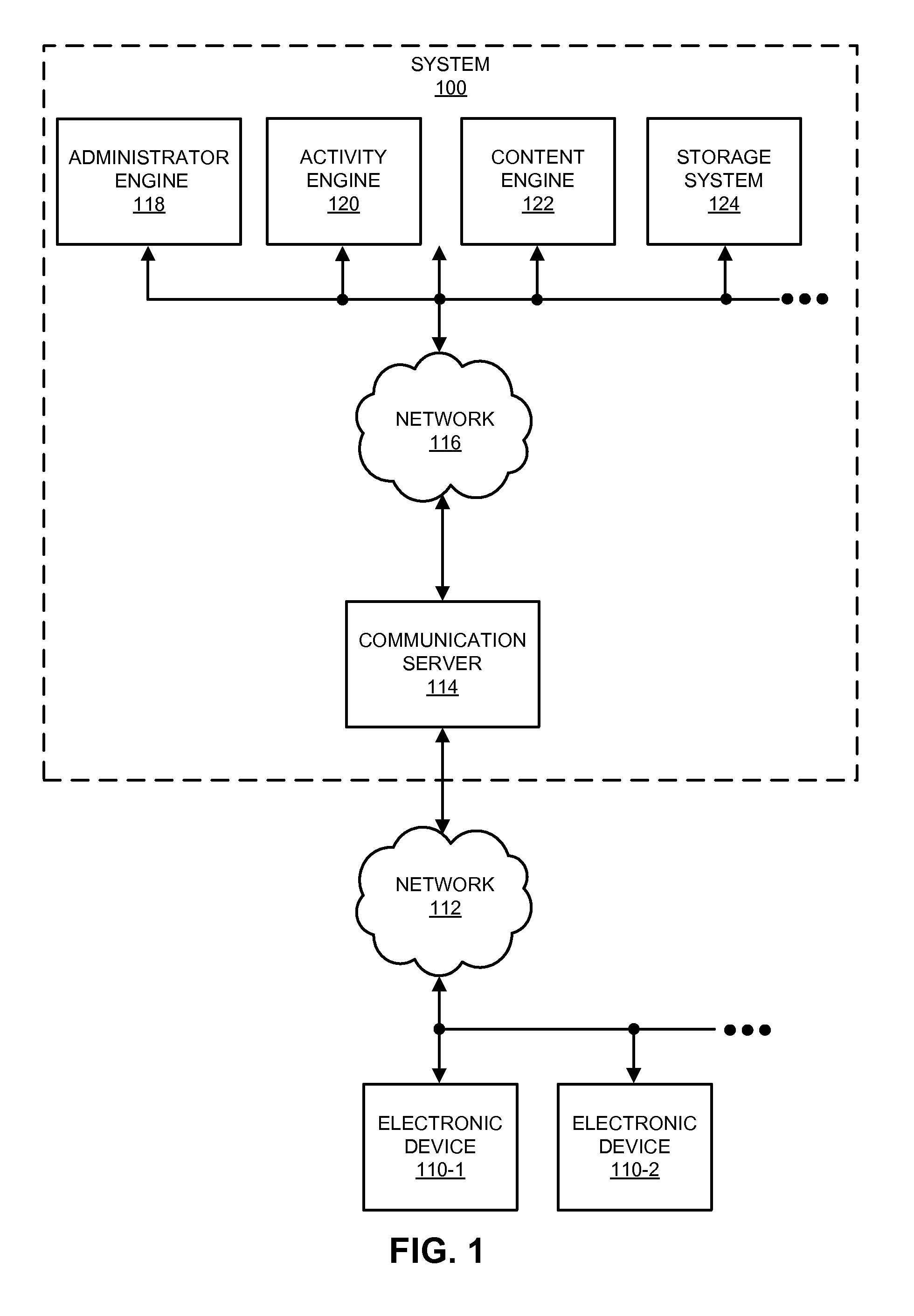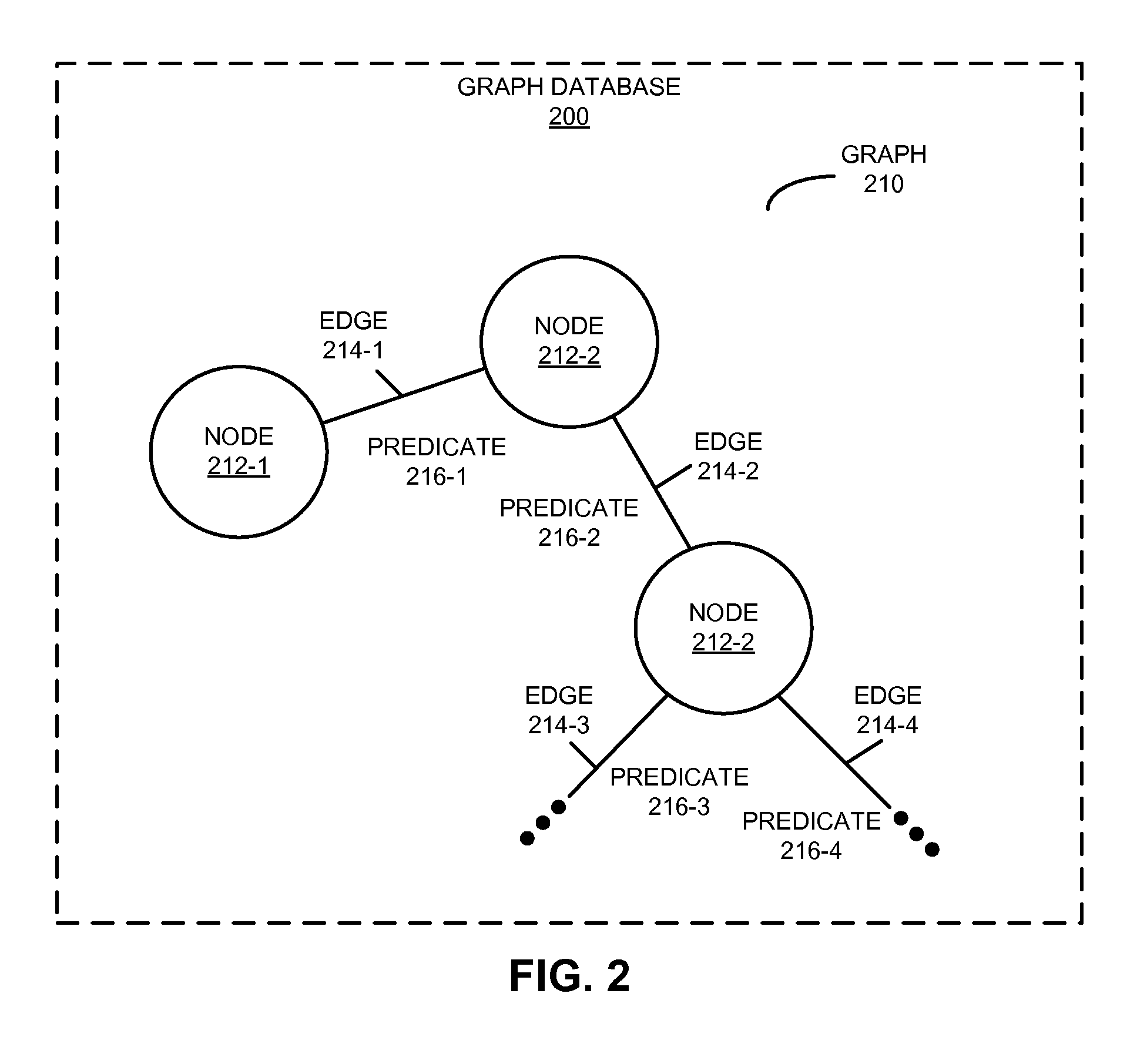Translating queries into graph queries using primitives
- Summary
- Abstract
- Description
- Claims
- Application Information
AI Technical Summary
Benefits of technology
Problems solved by technology
Method used
Image
Examples
Embodiment Construction
[0031]In order to request desired information from a graph database, a system executes a query (which is sometimes referred to as an ‘edge query’) against the graph database. The graph database may store a graph that includes nodes, edges between the nodes, and predicates to represent and store data with index-free adjacency. Moreover, the query may identify a first edge associated with a predicate that specifies one or more of the nodes in the graph. In response to the query, the system receives a result that includes a subset of the graph. In particular, the subset of the graph typically must include the desired information expressed within an associated structure of the graph.
[0032]Furthermore, the result of the query may be used in a concatenated or sequential set of queries. In particular, the system may execute a second query against the subset of the graph received in response to the original query. This second query may identify a second edge associated with a second predica...
PUM
 Login to View More
Login to View More Abstract
Description
Claims
Application Information
 Login to View More
Login to View More - R&D
- Intellectual Property
- Life Sciences
- Materials
- Tech Scout
- Unparalleled Data Quality
- Higher Quality Content
- 60% Fewer Hallucinations
Browse by: Latest US Patents, China's latest patents, Technical Efficacy Thesaurus, Application Domain, Technology Topic, Popular Technical Reports.
© 2025 PatSnap. All rights reserved.Legal|Privacy policy|Modern Slavery Act Transparency Statement|Sitemap|About US| Contact US: help@patsnap.com



